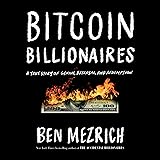Unlocking Bitcoin Options Data: Advanced Strategies for Market Edge
Are you continually searching for that critical advantage within the dynamic cryptocurrency markets? Many investors seek a distinct edge. This elusive insight, when appropriately utilized, may yield significant gains for those who possess it. Oftentimes, such valuable information is reserved for a select few or is simply too costly to acquire. However, effective analysis of Bitcoin options data can provide a powerful, yet accessible, resource. This information helps traders navigate the market with enhanced clarity and foresight.
The video above provides an insightful introduction to leveraging the Bitcoin options market. It explains how to interpret complex data points. This supplementary guide will expand upon these critical concepts. It aims to equip you with the essential tools for understanding market movements. Furthermore, it will help you anticipate potential price directions in the Bitcoin spot market. Mastering these techniques allows for a more informed and strategic approach to trading.
Foundations of Bitcoin Options Trading: Understanding the Core Elements
To effectively utilize Bitcoin options data analysis, a fundamental understanding of options is necessary. An option is recognized as a financial instrument. It grants the holder the right to buy or sell an asset at a predetermined price and time. A call option provides the right to purchase the asset. Conversely, a put option grants the right to sell the asset.
These instruments, offering optionality, carry an inherent cost known as the option premium. This premium represents the price of the option itself. Options are derivative instruments. They are traded on their own market, separate from the spot market. It is analogous to the distinction between futures and spot markets. Several variables influence an option’s premium; these are collectively termed the Greeks. They serve as crucial inputs into the renowned Black-Scholes pricing equation.
The main drivers of an option’s price must be understood. First, the moneyness of an option is considered. This refers to whether an option is “in the money” or “out of the money.” For a call option, if the spot price exceeds the strike price, it is in the money. Conversely, if the spot price is below the strike price, it is out of the money. If the strike price equals the spot price, the option is “at the money.” These conditions are simply reversed for put options.
Moneyness directly impacts the Delta variable. Delta measures the sensitivity of the option’s price to changes in the underlying asset’s price. Higher Delta indicates greater sensitivity. Another vital input is implied volatility. Elevated implied volatility generally leads to a higher option price. This is logical; a more volatile asset demands a greater premium to offset its associated risks. Time to expiry also correlates positively with price. Longer expiry periods mean more time value for the option. Theta measures the sensitivity of an option’s price to the passage of time. These factors are paramount for anyone seeking to engage in options trading strategies.
Deciphering Market Sentiment with Put-Call Ratios
The put-call ratio is a fundamental metric. It offers insights into general market sentiment. This ratio measures the open interest or volume of put options versus call options. Open interest reflects the total notional outstanding on options positions. Volume, conversely, indicates the total amount traded over a specific period. For instance, an open interest put-call ratio of 1.36 means put option open interest is 36% greater than call notional outstanding. This highlights a prevalence of bearish positioning among crypto options traders.
A put-call ratio greater than one is generally interpreted as a bearish signal. It indicates more outstanding put positions than call positions. A ratio less than one suggests a bullish outlook. It reveals more call positions. However, the absolute number of the ratio is less significant than its directional movement. Observe whether the ratio is increasing or decreasing. This trend provides a clearer understanding of shifting market sentiment. Imagine if the put-call ratio steadily climbs over several weeks. This could signal a growing apprehension among traders. Therefore, this market intelligence is crucial for anticipatory adjustments.
This metric serves as an overview of broader market positioning. It provides an indication of collective expectations. Analyzing these movements over time allows traders to gauge prevailing sentiment. This information is invaluable for informing wider investment decisions. Professional investors widely use these metrics. It is a key tool in assessing the Bitcoin market outlook.
Understanding Option Skew for Relative Value
Option skew offers a more nuanced measure of market sentiment. It assesses the relative richness of put versus call options. This is expressed in terms of implied volatility. Specifically, it quantifies how much higher the implied volatility of put options is compared to call options. This comparison is normalized by the at-the-money volatility. The 25 Delta option skew is a commonly cited example.
This metric effectively reveals trader willingness to pay for specific directional exposure. A positive skew, such as 20%, suggests that the implied volatility of a put option is 20% greater than that of a call option. Consequently, the price of similar put options is higher. This indicates a greater demand for bearish protection. Conversely, a negative skew implies that call options have a higher implied volatility. This makes them more expensive. This scenario, for example a negative 27% skew for three-month options, is generally interpreted as a bullish signal. Traders are willing to pay more for bullish exposure.
Monitoring the option skew over time is vital. It shows how relative value and sentiment have evolved. Consider a situation where the skew transitions from neutral to significantly negative. This indicates a pronounced shift towards bullish sentiment. Market participants are increasingly paying more for calls than puts. This trend often correlates with upward movements in the spot price of Bitcoin. Such shifts can provide early indications of sustained price trends. This makes option skew an indispensable tool for derivatives market analysis.
Leveraging Probability Distributions for Realistic Price Targets
The Black-Scholes model provides a powerful capability. It allows for the calculation of an asset’s potential price distribution at expiry. Given an option’s price and its various parameters, probabilities of Bitcoin being above specific strike prices can be determined. This effectively provides insights into market expectations for future price levels. For instance, it might be revealed that the probability of Bitcoin exceeding $22,000 by a certain date is 28%. The probability of it surpassing $24,000 might be 19%. Such figures offer a dose of reality amidst speculative hype.
These probability distributions are particularly valuable in the volatile crypto space. They help to anchor expectations in data rather than unsubstantiated predictions. The professional investors who dominate the Bitcoin options market make informed decisions. Their willingness to pay for option protection and exposure reflects realistic price predictions. Consequently, these market-backed probabilities often serve as a more reliable benchmark than pronouncements from crypto influencers. Imagine if widely circulated predictions suggest a rapid surge to an improbable price. The options market data might reveal a significantly lower probability for such an outcome. This contrast provides a more grounded perspective. Therefore, these tools are essential for prudent risk management and market sentiment analysis.
Navigating Bitcoin Options Expiry Dates and Spot Volatility
Option expiry dates are pivotal events in the Bitcoin market. They often correlate with increased volatility in the spot price. This phenomenon occurs because market participants adjust their positions for physical delivery. Similarly, market makers frequently need to rebalance their hedge positions. These adjustments, made as expiry approaches, directly influence the underlying spot markets. When a large volume of options is outstanding, the impact on the spot market tends to be more pronounced. This effect, recognized in traditional equity markets, now significantly influences Bitcoin.
Volatility typically intensifies roughly two to three days before the actual expiry. During this period, option holders may either close their positions or roll them into new options contracts. This activity contributes to potential price swings. While predicting the exact direction of movement is challenging, insights can be gleaned from examining option order books. Platforms such as Deribit, known for their liquidity, provide valuable data. Focusing on options relatively close to the money level for an upcoming expiry, one can determine total outstanding notional for calls versus puts.
For example, analyzing specific options near expiry might reveal significantly more call positions than put positions. Suppose call open interest is 4,200 Bitcoin and put open interest is 1,770 Bitcoin. This indicates a 2.4 times greater call presence. Theoretically, this suggests stronger buying pressure compared to selling pressure as expiry nears. Consequently, a more bullishly positioned market might be anticipated. However, market conditions are dynamic. This analysis should be re-examined closer to the expiry date. Furthermore, other factors, including futures markets and large whale orders, influence price movements. This method, while not infallible, serves as a useful guide for gauging potential expiry-driven movements in the Bitcoin market. Ultimately, understanding Bitcoin price prediction benefits from a multi-faceted approach.







